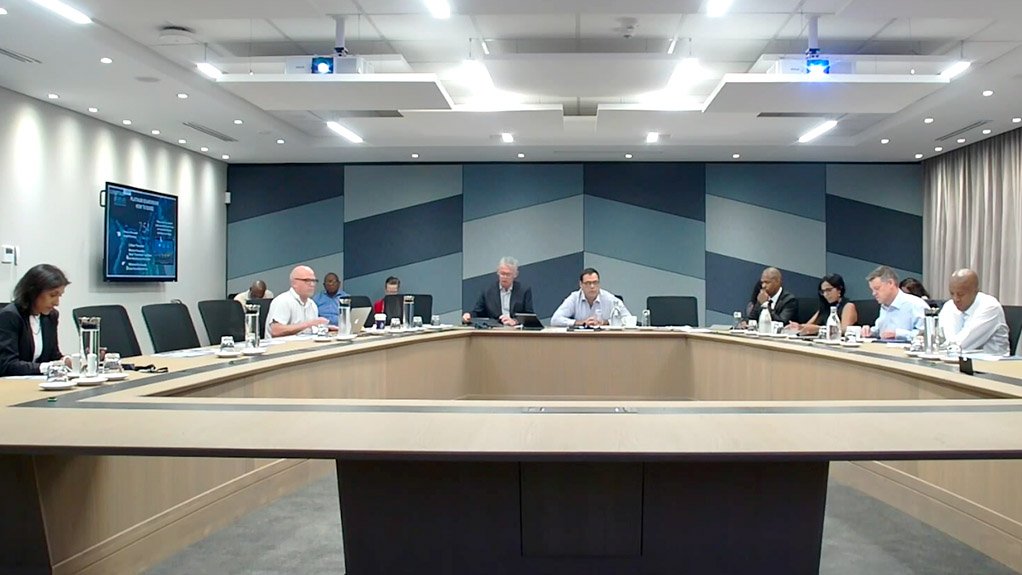JOHANNESBURG (miningweekly.com) – Platinum group metals (PGMs) mining, refining, and marketing company Implats, which reported solid production in a low-price environment on Thursday, is ironically still experiencing strong demand for all major PGMs with the exception of ruthenium.
The group generated half-year earnings before interest, taxes, depreciation and amortisation of R8.4-billion, headline earnings of R3.3-billion, or 365c a share, and recorded a free cash outflow of R4.8-billion, after funding capital expenditure of R6.8-billion.
“On the demand side, if we were to look at the current requirements from customers, we still see very good demand in terms of all the major metals except for ruthenium,” Implats group executive: refining and marketing Sifiso Sibiya said In response to questions from Mining Weekly during a media briefing.
“In terms of what's happening with the prices and what's happening in the market, the overall volume of above-ground stocks and the destocking by several original equipment manufacturers (OEMs) and the Chinese fibreglass manufacturers, has affected prices.
“If we look at our market development, on the development front, on the AP Venture side, we've seen quite a good uptake from companies that are focusing on the hydrogen economy.
“If we look at the World PIatinum Investment Council in terms of investment, we've made quite good progress in terms of the net ounces that have been taken by our partners.
“On the jewellery side, Chinese platinum jewellery remains low, as it has been over the last couple of years, and we expect an uptick this year.
“But if we look at the other regions, for example, Japan, India and the US, there's quite a healthy demand on the jewellery front.
“So, demand-wise, things are very good but prices are not reflecting what we see on the floor,” said Sibiya.
On prices not reflecting the good demand, Implats group executive: corporate relations Johan Theron contended that in his view the demand is being reflected in the price. “I think it does. If we look back two, three years, certainly that deficit, fundamental market balance was reflected in price.
“It's just important to understand that you've got two driving forces, you've got the physical supply-demand market, but you also have sentiment – sentiment on the global economy growth rates, investments, where the global growth is heading, and then people are also able to take positions on the paper markets – long, short positions, speculative marketing.
“So, when you see prices turn down from the record highs, then immediately people that are sitting on too much metal or have excess metal start selling that into a lower price to try and lock in as much value as they can, and, of course, they can protect themselves on the futures market by going short or negative, depending on their position.
“What we've seen over the last year is massive increases in short positioning, specifically in palladium, and that overhang of a negative sentiment on the market is what is primarily driving prices to what we are experiencing today,” Theron explained.
DISCOUNTED MATERIAL
Added to that, specifically regarding palladium, over the last 12 months heavy discounted material has been seen coming from Russia, which created two market prices specifically in the Chinese and in the US markets.
“All those have weighed in heavily on pricing, with prices not following fundamentals,” Sibiya added.
“Two things potentially can reverse it. If we start seeing the interest rate cycle moderating, like we all expect and global growth in the economy, prospects improve, then sentiment will improve and there will be reaction,” said Theron.
“Equally with the cuts and that on the supply side that we all are affecting, if indeed there is a healthy underlying market, then buyers are going to find it difficult to source metal, and then those short positions on the future markets are going to be squeezed out and then you should see a price response.
“A price turn can happen through sentiment or it can happen through the physical market but both those forces are always in play, not necessarily always in the same direction,” Theron added.
GREEN HYDROGEN
On hydrogen’s potential use of PGMs going forward, Implats executive: corporate affairs Emma Townshend said in response to Mining Weekly that Implats continues to be very encouraged by the news of further developments it is seeing in the hydrogen market.
“There's positive and growing momentum. I think yesterday Honda announced they are launching a fuel cell electric vehicle (FCEV). You're starting to see more and more kind of mainstream OEMs announcing lineups of FCEVs, which I think is a big shift in the news flow that we've seen over time.
“It’s something that we think is a medium- to longer-term drive of demand. I think it creates positive sentiment. We're not seeing downgrades to estimates we're seeing upgrades, but it does take some time before it becomes a meaningful driver.
“So, at the moment, probably 80 000 oz to 100 000 oz of PGMs uptake in the last 12 months. That moves to closer to half a million ounces towards the end of the decade, and then momentum really starts going in the 2030s, and it's driven by the downstream and midstream and upstream applications and they are numerous.
“It's hydrogen but also associated products, so things like ammonia. We're invested in AP Ventures, which is a private equity fund focused on hydrogen-associated technologies with a bent for PGMs demand.
“The quality and the calibre and the number of companies that we see and we are exposed to through that investment continues to create a lot of confidence in that market and the demand that we should enjoy from that in time,” said Townshend.
“The key point is the world needs to go through a fundamental change to make hydrogen mainstream and that's going to take the better part of a decade or two,” said Theron.
“But the direction of travel and the benefits that can be derived are clear and that's why we've seen policy and we are seeing governments putting money to that change.
“Now, if you just think about internal combustion engines, the big bite in demand is projected around 2030/2035, and the real uptake for hydrogen is probably still a little beyond that and closer to 2040.
“So, the work that we're doing now is really to try and pull that hydrogen uptake closer. If we can have a neat overlap between demand going down in internal combustion engines and hydrogen picking up, then you'd have a much smoother, less disruptive market.
“But it's going to take time to change the world and the consumption and use of hydrogen meaningfully, and we just need to try and see how we can accelerate that,” said Theron.
“Currently, we’re see 150 000 or so ounces of PGMs being used in the hydrogen space and the estimations are that this number would move to 3.25-million ounces to 3.5-million ounces by 2035,” Sibiya pointed out.
“So, there are positive requirements which will offset whatever decline we see in internal combustion engines and the work on that is currently ongoing, so it's looking good,” Sibiya enthused.
HYDROGEN CARS ON SOUTH AFRICAN ROADS
For the first time, luxury vehicle manufacturer BMW has a fleet of hydrogen-fuelled cars on South Africa’s roads, supported by a green hydrogen refuelling infrastructure set up at its Midrand campus in Johannesburg.
The outcome of BMW, Anglo American Platinum and Sasol finding common ground was the launch on Valentine’s Day of the BMW iX5 Hydrogen passenger car, which Mining Weekly can confirm infinitely outstrips the ‘sheer driving pleasure’ slogan of the already top-rated BMW mobility brand.
Tested by enthusiastic media on local South African roads, BMW iX5 Hydrogen combines long-distance capability and short refuelling stops with emission-free driving – an absolutely necessary advance to save Mother Earth from climate change catastrophe.
The BMW iX5‘s 6 kg of hydrogen allows for a 500 km range, with the car’s platinum-based fuel cell turning green Sasol hydrogen into perfectly clean electricity that powers the quiet drive train.
It is no coincidence that South Africa, with its superior sun, prime wind and abundance of PGMs, is one of only ten countries currently traversed by BMW’s latest green hydrogen masterpiece.
What the car world loves about hydrogen is that it is not only the planet’s most abundant energy source but that it is also a transport vector with a storage magnitude that ensures that renewable energy can be offered even when the sun is not shining and the wind is not blowing.
Growing the market for hydrogen-fuelled mobility solutions has been declared a key pillar of the South African government's green hydrogen economy strategy, which will lower carbon emissions meaningfully, unlock investment enormously, create jobs, and drive demand for this country’s magical PGMs.
Although hydrogen has unrivalled attributes, including having more than three times the gravimetric energy density of conventional fuel, as with any new technology adoption it has a competitive path to tread.
But it must be borne in mind that one cannot get a more sustainable fuel than hydrogen with 75% of the entire universe being hydrogen and 70% of planet Earth being covered by water, made up of a hydrogen molecule and two oxygen molecules.
There are no carbon emissions in creating it from renewable sources and there are no carbon emissions in using it as the by-products are heat, electricity and water.
“We are going to see this unique little element offer us a potential way out of our climate crisis,” BMW hydrogen programme director Deena Govender commented to Mining Weekly.
The key takeaway of the discussion at the launch event was that collaboration is going to be key given that the hydrogen economy spans so many industries.
Anglo American executive head: projects and environment Prakashim Moodliar described as fantastic the collaboration already under way with BMW and Sasol on the demonstration launch of the BMW iX5 Hydrogen in South Africa.
“The hydrogen economy unpacks fantastic value for South Africa and for us as PGM miners, with platinum and iridium used both in the generation of green hydrogen and the opportunities in PEM electrolysers and in FCEVs,” Moodliar added.
The hydrogen car basically is an electric car. It uses hydrogen as the energy instead of electricity that is stored in a battery but drivers have all the advantages of electric drive, such as good acceleration, silent ride, zero emissions and refuelling in three to four minutes.
Sasol has begun to feed its 60 MW electrolyser on site at Sasolburg with 3 MW of solar energy generated on the premises.
That has enabled the company to commence the production of 150 kg of green hydrogen a day.
While that is under way, the commissioning of a wind farm project being developed in the Eastern Cape is imminent to allow for the feeding in of 65 MW of renewable power into its Sasolburg electrolyser.
That will enable Sasol to produce 3.5 t of green hydrogen a day at commercial scale.
EMAIL THIS ARTICLE SAVE THIS ARTICLE ARTICLE ENQUIRY
To subscribe email subscriptions@creamermedia.co.za or click here
To advertise email advertising@creamermedia.co.za or click here















